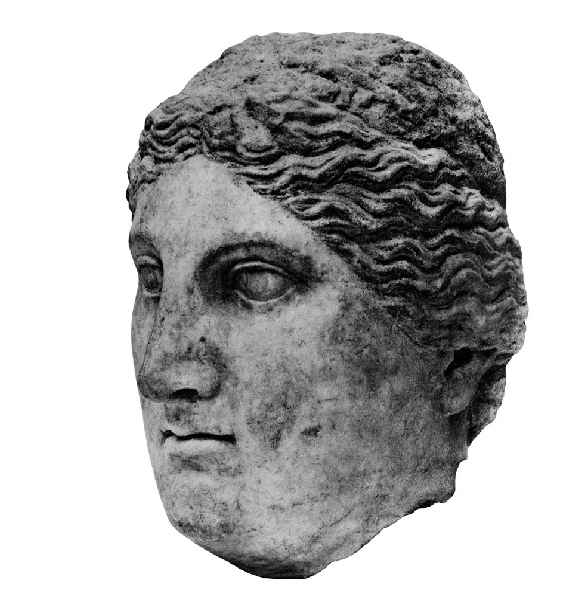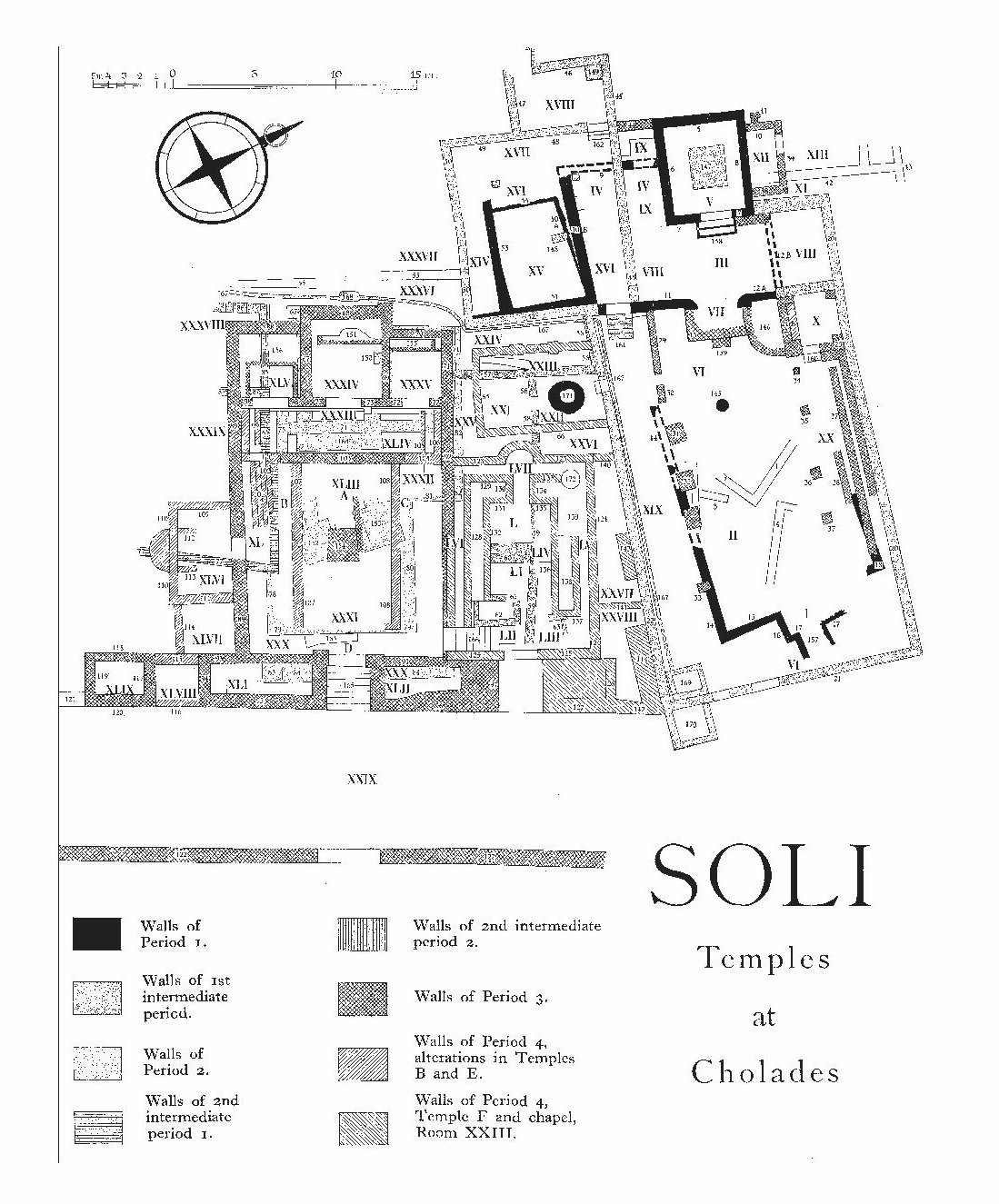
PHRC042 : Dedication to Arsinoe Philadelphos, Soloi - Cyprus (270-240 BC) Dedication
Permanent ID http://s.phrc.it/phrc042
Photo 1: Plan of the temples of Soloi-Cholades; on the right, temple A (Aphrodite; 3rd cent.), later replaced by temples B and C (Aphrodite + Isis). From Westholm 1936, p. 87, fig. 50
Photo 2: Photo of the marble head of Ptolemaic queen, probably Arsinoe II; from Westholm 1936, pl. III, find 438





